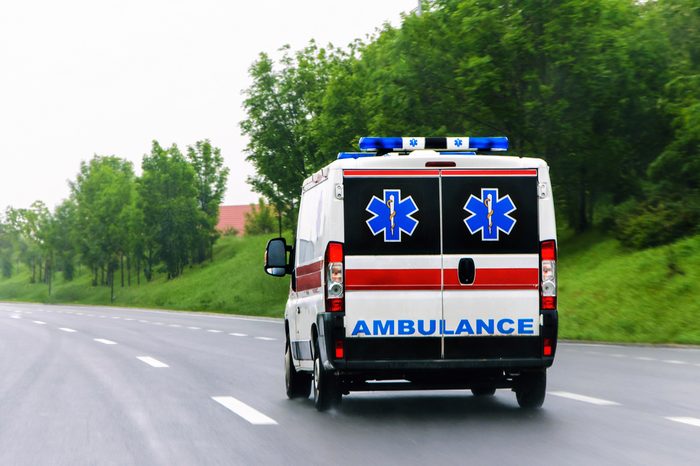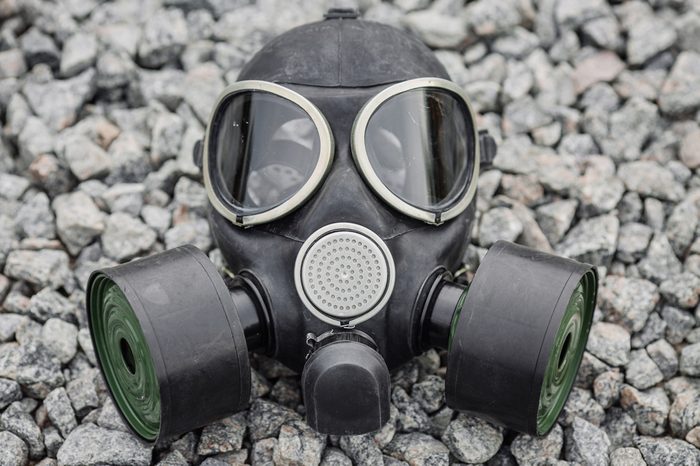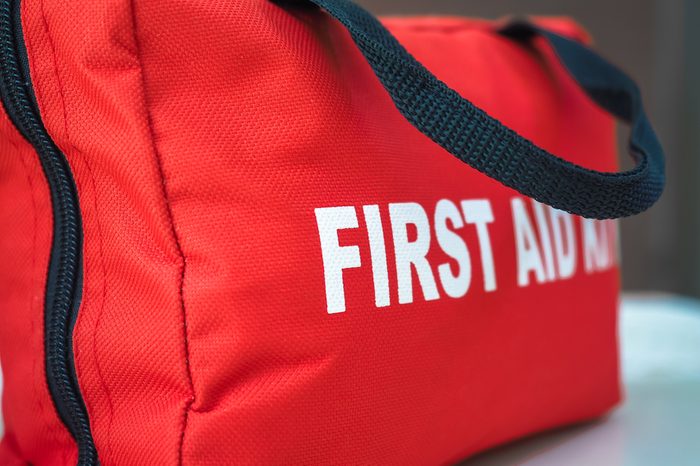
When the worst happens
“I’ll never forget the sound of metal crunching,” says George Larson, a passenger on Indian Airlines Flight 440 from Chennai to New Delhi in 1973. It was 10:30 p.m. On the final approach, the plane hit power lines and slammed into the ground. Larson was thrown from his seat. Passengers screamed as the fuselage began to split in half.
The next thing Larson knew, he was lying on some wreckage. Soon there was an explosion as the fuel tanks ignited.
As debris rained down, Larson pushed off the wreckage and rolled down onto the ground. In survival mode, he clawed himself to safety before the fire spread. Of 65 passengers and crew on board, Larson was one of just 17 survivors.
Surprisingly, plenty of people in deadly scenarios don’t act fast enough to save their own lives. Footage of the Japanese earthquake in 2011 showed people risking their lives while rushing to save bottles of alcohol from smashing in a supermarket. And when a plane landed with one engine on fire at a Denver airport last year, evacuating passengers lingered by the plane to watch the flames and take photographs.
“Survival training isn’t only about training people what to do—it’s also about training them to inhibit certain actions that they would routinely do,” says John Leach, survival psychologist at the University of Portsmouth. He estimates that in a crisis, 80 to 90 percent of people respond inappropriately.

Freezing
One response in the face of danger is to simply do nothing. During the stabbing at London Bridge last year, an off-duty police officer who tackled the attackers reportedly described members of the public nearby as standing “like deer in the headlights.”
The reaction is so universal, psychologists talk of the fight-flight-freeze responses to threat. As different neurochemicals surge through the body and our muscles tense, the primitive “little brain” at the base of our necks sends a signal to keep us rooted to the spot.
It’s the same mechanism across the animal kingdom, from rats to rabbits, where it’s a last-ditch attempt to stop a predator from spotting us. But in a disaster, fighting this impulse is vital to survival.

Inability to think
During the Gulf War, Israel braced itself for a poison gas attack from Iraq. Gas masks and the antidote to nerve gas were distributed to the entire population. On the sounding of an alarm, the public should retreat to a sealed “safe” room, then put on their gas mask.
Between January 18 and February 28, there were 39 missile attacks on Israel, most of them directed at Tel Aviv. Though no chemical weapons were used, more than a thousand people were injured. But not in the way you might think.
Hospital admissions reveal that just 22 percent of the casualties were directly harmed by an explosion. The vast majority—more than 800 people—were injured indirectly as a result of fear aroused by the alert signals.
This included seven deaths caused by putting on a gas mask and then forgetting to open the filter. Two hundred and thirty people had injected the nerve gas antidote, though they hadn’t been exposed. Forty injuries (mostly sprains and fractures) had occurred while the victim was rushing to the sealed room.
What was going on?
Our brains are disconcertingly slow—while disasters are rapid. Airplane manufacturers are required to show that the plane can be evacuated in 90 seconds, since the risk of the cabin being consumed by fire sharply increases after this time. Meanwhile, most of us are still fumbling with our seatbelts.
“The brain has a very limited capacity for processing new information,” says Sarita Robinson, a psychologist at the University of Central Lancashire, in England.
In a disaster, the speed at which we think goes from bad to worse. “When we experience acutely stressful situations, the body releases many hormones, such as cortisol, adrenaline, norepinephrine, and dopamine,” says Robinson. This cocktail of hormones impairs the functioning of the prefrontal cortex, which is responsible for such higher functions as working memory. Just when we need our wits the most, we become forgetful and prone to making bad decisions. Learn some tips to help you survive basically any situation (life-threatening and otherwise).

Tunnel vision
In a crisis, it’s reassuring to think that we’d respond by creatively thinking our way around the problem. But—you guessed it—it’s the opposite. A typical response to disaster is so-called “perseveration”—attempting to solve a problem in a single way, again and again and again, regardless of the results.
Issues with seat belts are reportedly extremely common in light aircraft, where they tend to buckle over the shoulder—people automatically look for them at their waist and panic when they’re not there. Other incidents have shown that in a crisis, pilots tend to become obsessed with one item of equipment or response.
Intriguingly, this tunnel vision is also seen in those who have permanently damaged their prefrontal cortex, suggesting that the brain’s stress response of impairing this region might be to blame for inflexible thinking in moments of crisis.

Staying stuck in a routine
On the face of it, going back to get your wallet when your home is on fire seems like madness or sheer stupidity. But it’s so common that survival psychologists have a word for it: “stereotypical behavior.”
“When you leave your house, you grab your wallet. You don’t even think about it. It’s automatic,” says James Goff, a specialist in disaster and emergency management at the University of New South Wales.
When Emirates Flight 521 crash-landed at Dubai International Airport in 2016, footage emerged of passengers scrambling around the plane to collect their bags. Fortunately, no passengers were killed as a result.
So why can’t we turn these unconscious reflexes off?
Our brains rely on familiarity. In non-disaster scenarios, mindlessly fetching our bag when the plane lands is thought to help free up mental space to focus on stuff we’ve never encountered before—such as navigating an airport in a foreign city. “We’re in the present but we’re looking to the future,” says Leach.
In an emergency, adjusting to a new situation can be more than our brains can take. Instead, we tend to press on as though nothing is happening. Learn the tips that’ll help you survive in the (unlikely) event of a plane crash.

Denial
At the extremes, this extends to completely ignoring the danger altogether. “Invariably, over 50 percent of the population do it; they go down to the sea to watch the tsunami,” says Goff, who works to increase public awareness of tsunamis in high-risk areas.
According to Robinson, denial usually happens for two reasons: people fail to interpret the situation as dangerous, or they simply don’t want to. The latter is extremely common in wildfires, since often evacuating your home means consigning it to ruin.
“People tend to wait until they can see the smoke—and this often means it’s too late to leave,” says Andrew Gissing, an expert in emergency risk management at consulting firm Risk Frontiers.
When the stakes are high, our brains tend to banish stressful thoughts. This may explain why a recent study suggested cancer patients wait an average of four months before getting their symptoms checked by a doctor.

So what should you do in a disaster?
For Goff, survival is about having a plan. “If you know what you’re doing in advance and you start early, you can usually get away from a tsunami,” he says. “But it might be a bit hairy.”
Leach has years of experience training the military to escape chilling scenarios, from hostage crises to helicopters that have crashed into water. He knows that the best way around the mental fallout is to replace unhelpful, automatic reactions with ones that could save your life. “You have to create adaptive survival behaviors that become the dominant response in an emergency,” he says. Often a single exposure is sufficient for a survival response to be created and instilled.
For George Larson, a survivor of Indian Airlines Flight 440, the biggest peril wasn’t the disaster itself, but what happened afterward. He emerged with first- and second-degree burns, a broken pelvis, a “busted” arm, and damage to his bladder.
To make sure he didn’t have any other internal injuries, doctors in India performed exploratory surgery. Weeks later, the wound wasn’t healing. On a hunch, Larson’s orthopedic specialist cut through the stitches and reached in with his forceps. “He pulled out this 30-day-old, rolled-up gauze,” he says. It was a fortunate discovery—if it had stayed in, his prospects would not have been good.
Preparation, acting fast, busting routines, and avoiding denial may all be ways to survive in worst-case scenarios—but sometimes you need a good dose of luck too. Next, learn what you should do to save your own life in 12 different emergency scenarios.